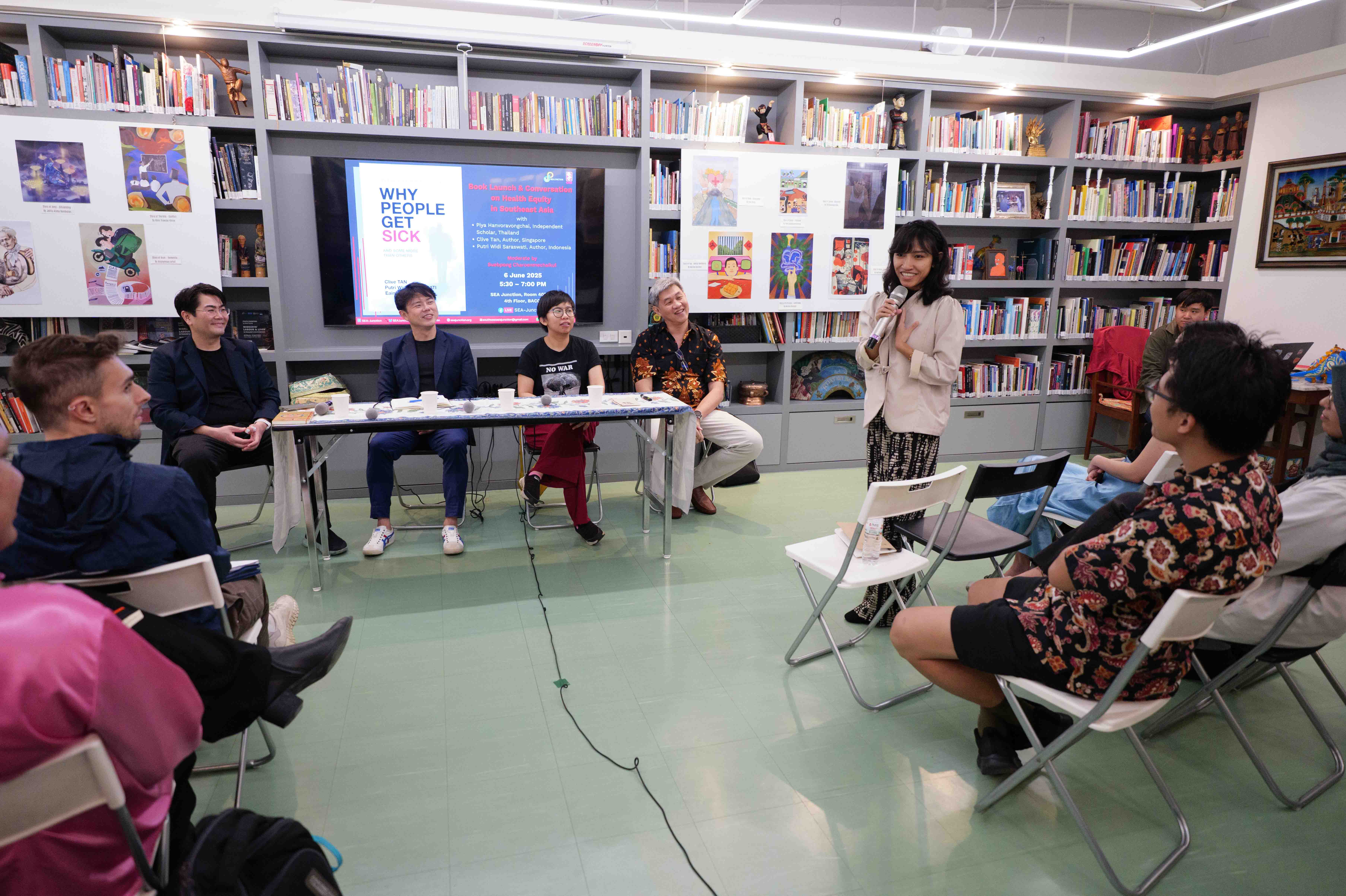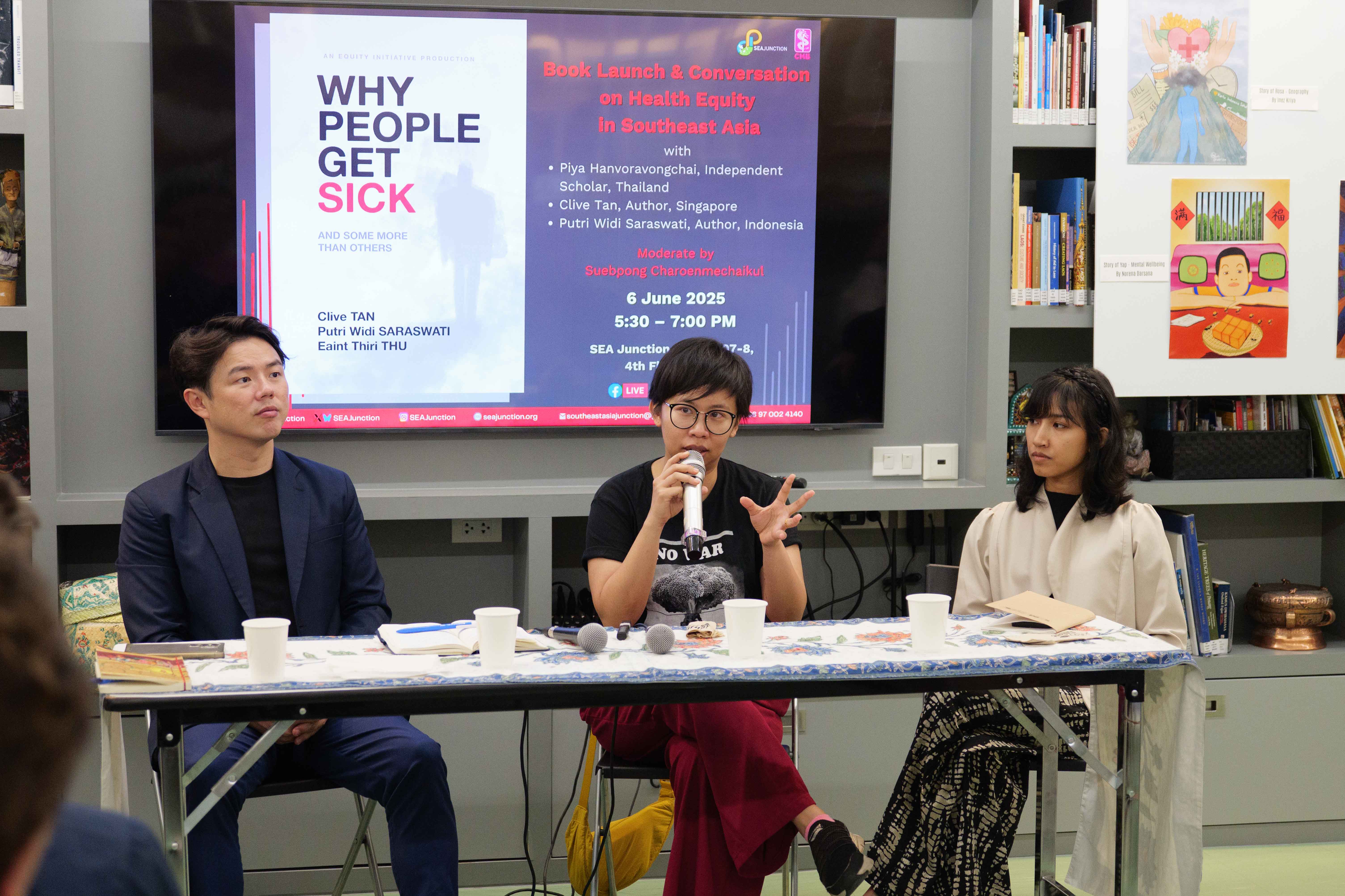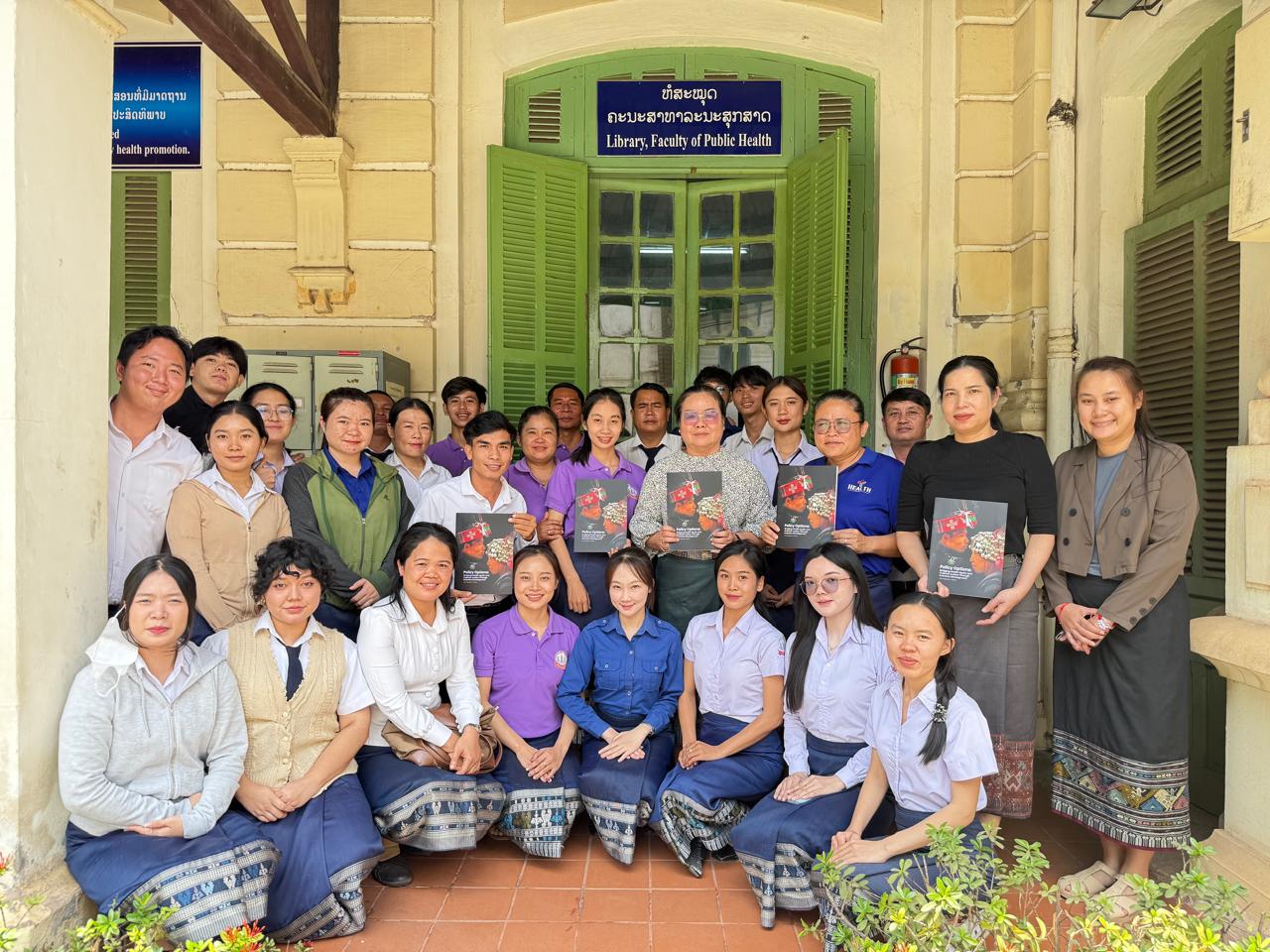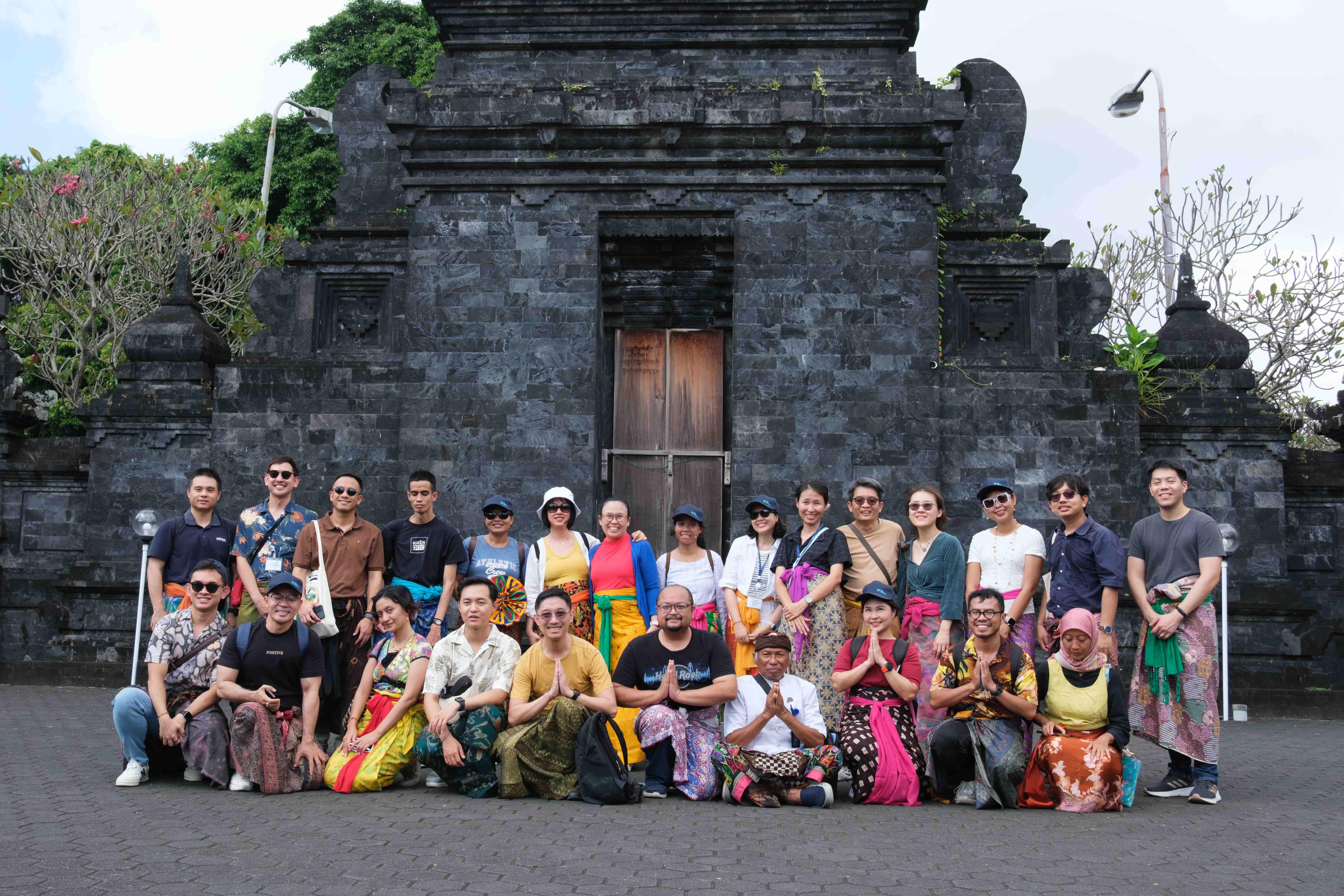Why People Get Sick — And Why We Must Tell Their Stories
Clive Tan, Eaint Thiri Thu and Putri Widi Saraswati’s new book brings lived experience to the heart of health equity
"My leg is really painful, but there's no way I can take another day off."
That’s how Ana’s story begins. A migrant mother living in Singapore, Ana works at her son’s childcare center, barely holding onto her job while coping with chronic pain and the inability to afford specialist care. Her headaches are near-daily, her knees are swollen, and the painkillers have stopped working. Still, hospital visits remain out of reach—too expensive, too low a priority in a household where even school uniforms come before health.
Ana’s story is one of many in Why People Get Sick: And Some More Than Others, a book written and edited by Equity Initiative Fellows Clive Tan (2022, Singapore), Eaint Thiri Thu (2022, Myanmar), and Putri Saraswati (2022, Indonesia), These stories offer an unfiltered look at what health equity really looks like for individuals across Asia. Told through firsthand narratives, the book bypasses jargon and theory to ask a simple but urgent question: Why do some people get sick more than others?
The book began as a second-year project under the Equity Initiative (EI) Fellowship. Drawing on the unique diversity of the EI community, Clive, Thiri, and Putri—who come from different countries, professions, and perspectives—formed an unexpected but dynamic team. Their collaboration was made possible by EI’s intentional design to foster cross-cultural exchange and multidisciplinary learning. Together, they quickly discovered that a major barrier to understanding health equity was how abstract it can feel.
Clive explained, “By the end of our first year, I still couldn’t explain health equity clearly to friends in Singapore or others across the region. I looked for books to help—most were expensive academic texts, inaccessible to the average reader. That’s when I got together with Thiri, and Putri to create something more approachable. With Thiri’s strong foundation in storytelling, we saw an opportunity to contribute something practical and relatable to help fill this gap.”
But Why People Get Sick is more than just a book—it’s a carefully crafted collection of short chapters, each focused on a real individual and their experience of health and illness. Structured around themes like citizenship, mental health, displacement, and aging, the book offers a way of approaching public health through empathy, narrative, and lived experience. Each chapter is short and digestible—designed to be read in under ten minutes and spark reflection, whether in classrooms, workshops, or quiet moments alone. At the end of each story, readers will find a brief reflection on the key health equity themes and issues raised, as well as thought-provoking questions intended to kickstart dialogue and deeper exploration.

Thiri shared, “Storytelling is how I make sense of the world. In Myanmar, we’ve used it through art and panel discussions to bring hidden issues to the surface. This project builds on those methods—using personal narratives to uncover the deeper forces that shape our health.”

Putri, with a background in both public health and social justice, saw the book as an opportunity to bridge the gap between theory and lived experience. She explained, “When you ask people whether health is a social justice issue, most will say yes. But when it comes to connecting those two fields in practice, there's a gap—they don’t often speak to each other. This book is my way of bridging that divide and advocating for greater connection between them.”
The stories in the book are intimate and striking in their simplicity. There’s no medical jargon, no policy briefs—just the voices of people living at the sharp edge of health inequity.
In one chapter, we meet Arun, a caregiver from Thailand whose mother’s Alzheimer’s disease has turned daily life into a struggle. Trapped in a cycle of caregiving, financial strain, and emotional exhaustion, Arun’s story unfolds quietly: “One day she went out to the store by herself and got lost. We were so worried. After many hours of searching, my sister and I found her wandering around at the mall and brought her back home.”
Caregiver burden, especially when resources are scarce and awareness of support is limited, is rarely discussed openly. Arun’s story offers a rare and personal glimpse into what it feels like to care for a loved one with dementia—an experience that too often goes unspoken in public discourse.
Clive shared, “We’re putting a magnifying glass on social injustice. Once readers see these issues, I hope they can’t unsee them.”
While powerful on their own, the editors never saw the book as an endpoint. Putri reflected, “This is just the first tool—a starting point to bring these stories into the world, where they might otherwise go unheard.”
The editors envision the book finding its way into the hands of policymakers, funders, and community organizers. The stories offer more than empathy—they offer insight. They show how public health breaks down not only in emergencies, but in daily, compounding injustices: citizenship status, mental illness, unpaid caregiving, language barriers, and systems that fail to see people as whole.
They want readers to walk away changed. That they carry these stories with them. That they see their neighbors, patients, coworkers, and even strangers with deeper understanding. Clive noted, “If they read the book while they’re young, then as they go through life—the good and the bad—they’ll begin to recognize the health inequities that often go unnoticed.” These stories may start small, but their impact—and the conversations they spark—can go far.
To support the work and amplify these stories, consider purchasing a copy for your school library and using the book as a case study to discuss health equity in your community. These stories are designed to spark dialogue and inspire change, whether in classrooms, professional training, or community discussions.
The stories and discussion prompts are designed to support professional training, academic instruction, and community dialogue. Use them to engage others in practical conversations about the everyday realities of health inequity.
Link to Amazon Singapore: https://www.amazon.sg/Why-People-Get-Sick-Initiative/dp/154378089X
Link to Amazon US: https://www.amazon.com/Why-People-Get-Sick-Initiative/dp/154378089X
The book was officially launched on June 6, 2025, at SEA Junction in Bangkok, in a vibrant discussion moderated by Thai Fellow Suebpong Charoenmechaikul and joined by former EI Program Director Piya Hanvoravongchai. Fellows, supporters, and members of the public gathered to celebrate the authors and reflect on the personal narratives that make Why People Get Sick such a powerful contribution to health equity. The photos in this story were from this book launch.





